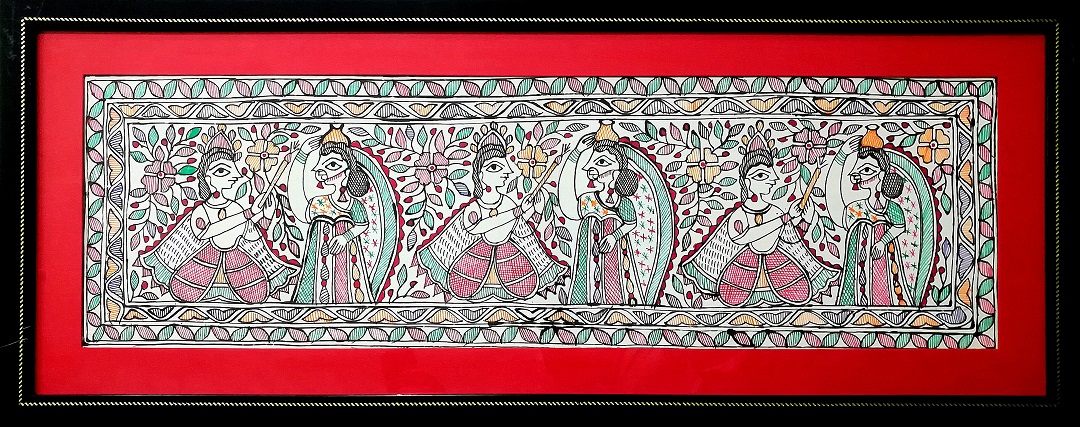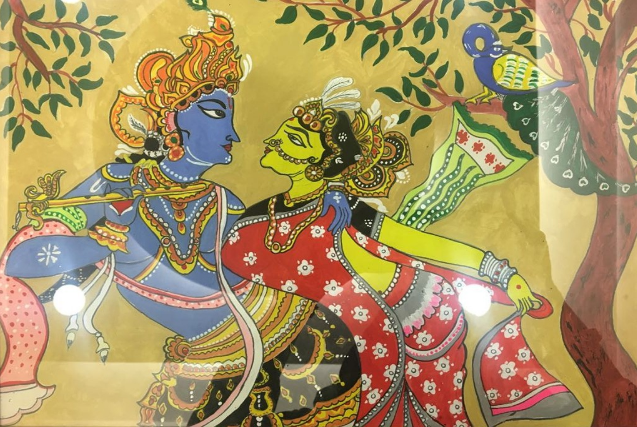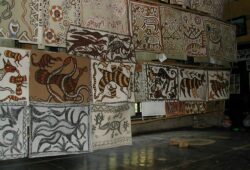Madhubani and Mithila Painting
 Posted On
Posted On
The word “Mahuban” means “forest of honey” from which Madhubani is derived. The district of Madhubani was carved out of the old Darbhanga district in th year 1972 as a result of reorganisation of the districts in Bihar. Being the birthplace of several literary personalities and home to world famous Madhubani paintings, it is also called the cultural heart of Mithilanchal. Madhubani or Mithila paintings are one of the oldest and most unique traditional art forms of India. These paintings are known for their bright colours, beauty, and symbolism. Each symbol in the Madhubani paintings has a specific and distinct meaning. Originally, these were drawn on the walls of the mud houses, but now can be created on canvas, handmade paper, and cloth. The colours used in these paintings are mostly hand-made and are derived from natural sources like charcoal and turmeric. Also, people use twigs, matchsticks or fingers to create complex geometrical figures in the painting.
Though the Folk Art originated in the Mithila region, these paintings can be found in the ancient Indian epic Ramayana as well. When Bhagwati Sita was getting married to Lord Rama, Raja Janaka asked the servants to paint the entire kingdom with Madhubani paintings. The culture was passed from one generation to another and people started painting the walls and floors of their houses on special occasions. These paintings became a sign of good omen, prosperity, divinity, spirituality, and benevolence.

Decades ago, the women of Bihar started making these paintings with the use of natural colours like haldi (turmeric) and sindoor (vermillion). They used to draw prominent symbols of fish, trees, nature, deities, and peacock to represent the occasion of celebration. Even today, these paintings are an integral part of many festivals and marriages in different parts of the country. These paintings are a part of the ritual activities and all are more or less the same.
Later on, this art form got an opportunity to be exhibited on the global stage by some contemporary artists. Though the artists used the same symbols and geometrical patterns, they used synthetic colours on canvas and painted with a brush. The most prominent themes in these paintings are Hindu deities, sun, moon, flowers, and some birds.
In villages, the women use this art form to empower other women and also to create awareness about some of the social issues prevailing in the society. Moreover, this art form has transformed into a profession and the men are also actively participating in it. For making it look authentic, the artists apply a bit of cow dung on the canvas.
It is surprising to know that in some parts of Bihar these paintings have helped prevent deforestation. Since people in the region are religious by nature, some artists painted Hindu deities on the trees in the forests. So instead of cutting the trees, they started worshipping them and eventually there was no more deforestation in that region.
The Peacock in Madhubani Art
Madhubani or Mithila is a traditional form of painting known for its bright colours, extensive use of symbolism and intricate patterns. The symbols used in this painting have their specific meanings, like fish symbolises fertility, procreation and good luck, tree is a symbol of life, while peacocks are associated with romantic love and epitome of beauty and ecstasy. A bird known for its beauty, it can easily attract the people around it by spreading its vibrant feathers in the air while dancing. The bright-coloured feathers of a peacock look so pleasing to the human eye. In the Indian folk art, a peacock holds a specific significance and meaning. A peacock in the Madhubani painting represents divine love, knowledge, prosperity, and romance. As the feather is in the form of an eye, it is believed that it saves us from the evil and negativity. People keep the feather of a peacock in their homes as a sign of good luck and prosperity. The peacock is also considered as a sign of protection and brings joy in one’s life.
This folk painting of a Peacock Madhubani Art was created in 2014 and it is acrylic on canvas. The dimensions of the painting are 12 inches x 12 inches.




